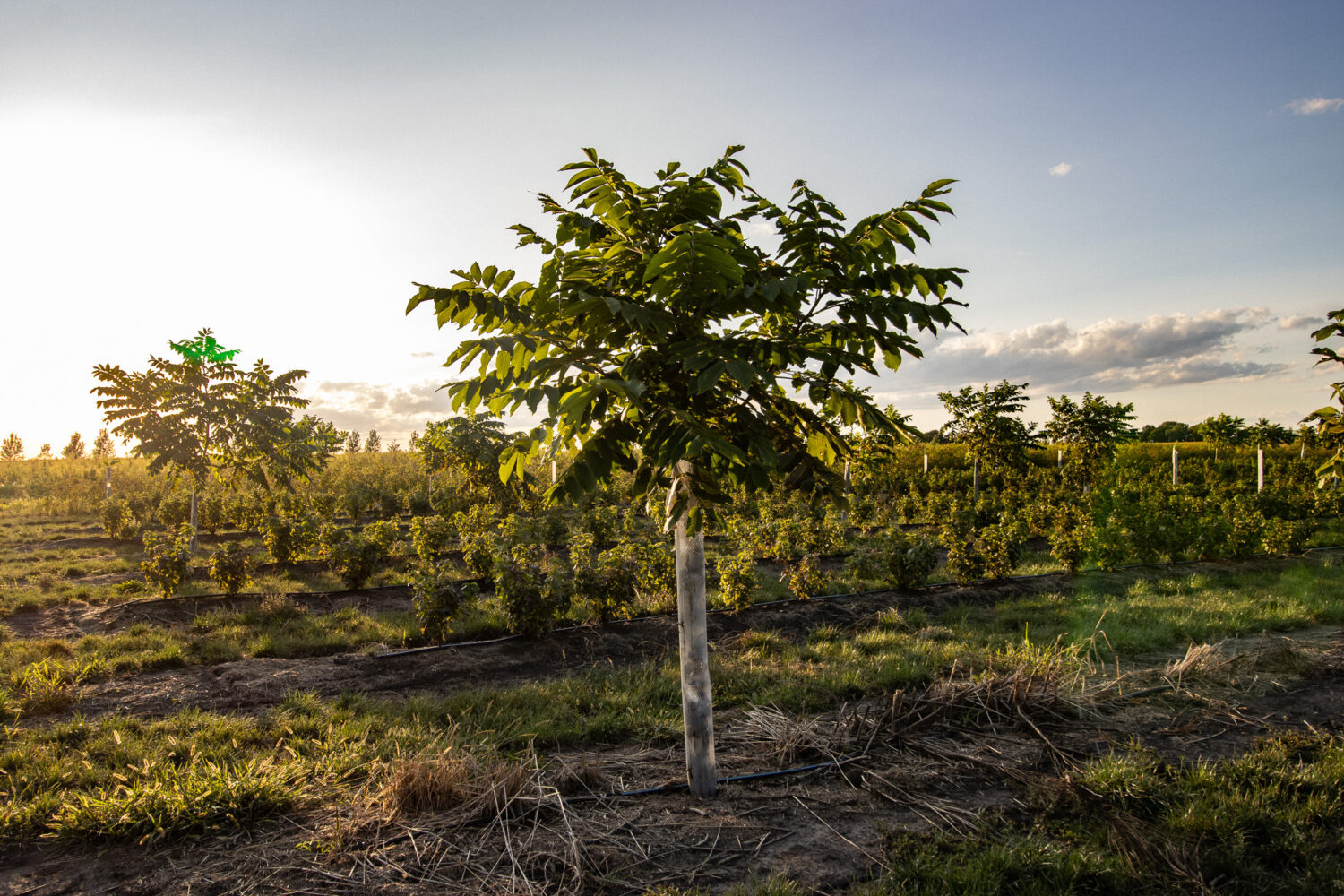Agroforestry systems are as diverse as the communities stewarding them. Successful implementation of agroforestry systems depends on selecting regionally adapted species, addressing distinct natural resource concerns, and reflecting the unique needs of their stewards. While agroforestry has recently gained momentum as a top land-based carbon removal practice, many Black, Indigenous, and other People of Color (BIPOC) communities have been implementing these systems for millennia, rooted in regional knowledge and cultural traditions.
To center BIPOC leadership in agroforestry policy, Carbon180 set out a year ago to co-imagine with partners what a BIPOC-led, and BIPOC-serving future for agroforestry in the US could look like. From this effort came the Steering Committee of BIPOC Leaders in Agroforestry, composed of eight champions of BIPOC-led agroforestry, each representing different US regions. Together, we spent the year identifying high-impact projects that could better center marginalized communities in agroforestry policy.

Over four working meetings and numerous conversations exchanging stories, experiences, challenges, and lessons learned across different regions, we learned a lot from our convenings with this group of agroforestry experts. Here are our two greatest takeaways:
- Communities use a diversity of language to describe agroforestry systems, requiring a bridge with federal agencies to increase programs’ impact.
The US Department of Agriculture (USDA) defines five primary agroforestry practices — alley cropping, forest farming, silvopasture, riparian buffers, and windbreaks — and uses these terms consistently throughout incentive and technical assistance programs. Communities use a broader range of language to describe their systems, often not even using the term “agroforestry.” Translation across regional, cultural, and USDA language is needed to more accurately recognize the degree of agroforestry already championed on the ground and ensure that federal support reaches intended practitioners. Developing shared language can serve both land stewards and USDA staff in advancing agroforestry: land stewards can better understand what support is available for practices they may already manage, and USDA staff can better understand what types of agroforestry systems are of interest in different regions and cultures.
- There are limited platforms for cross-regional agroforestry connection and exchange, particularly among BIPOC communities.
BIPOC, immigrant, and low-resource communities face unique barriers to accessing support and making agricultural transitions, which we aim to disrupt in the movement for widespread agroforestry. While there are growing efforts to build a connected and durable coalition for agroforestry in the United States, there is limited data on adoption within historically excluded communities. The Steering Committee expressed the novelty and value in connecting regularly with other BIPOC leaders and experts from different regions. More opportunities to cultivate community for agroforestry, with particular attention to BIPOC communities and in-person collaboration, are needed to exchange insights, coordinate efforts, and sustain momentum long-term. Identifying and learning from existing BIPOC-led agroforestry projects and systems in different regions — their greatest driving values, challenges, successes, and learnings — will nurture stronger representation of what BIPOC-led agroforestry looks like on the ground, and how federal policy can fill gaps in support.
Looking forward, we aim to continue working with the Steering Committee and leverage these insights to improve federal policy for BIPOC-driven agroforestry. We aim to both map the language used by practitioners on the ground and build a network of BIPOC-led agroforestry projects to fill knowledge gaps in the field. We’ll then use these lessons to educate policymakers about the complex realities of implementing agroforestry systems, the diversity of shapes these systems can take, and the wide range of language that USDA can expect to hear from farmers beyond agency-defined terms.
There is diversity embedded in these complex agricultural systems, the communities that steward them, and the way we communicate and champion them. By embracing and uplifting this diversity, we can increase shared understanding between farming communities and federal partners, while also improving USDA’s programmatic and technical assistance delivery.
Much gratitude and appreciation for the wonderful 2024-2025 BIPOC Leaders in Agroforestry Steering Committee, who have nurtured generative collaboration throughout this year: Lord Ameyaw (Northern Plains), Kenneth Dunn (Southeast), Stephanie Gutierrez (Pacific Northwest), Kamealoha Hanohano Pa-Smith (Pacific of Islands), Igalious Mills, (Southern Plains), Karam Sheban (Northeast), Alicia Thompson (Southwest), and Ruth Tyson (Midwest).
Edited by Ana Little-Saña. Photography by Courtney Fee.

